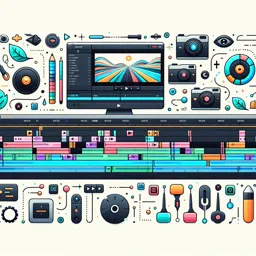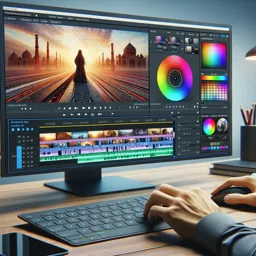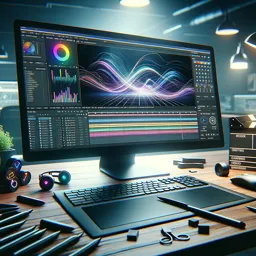Unlock the Power of Fusion: Advanced Compositing in DaVinci Resolve
DaVinci Resolve is widely recognized for its color grading and video editing prowess, but its Fusion page takes your projects to new heights with advanced compositing tools. Whether you want to create sophisticated visual effects, seamless green screen composites, or layered motion graphics, Fusion is your all-in-one solution. In this article, we’ll explore advanced Fusion compositing techniques that push your creative boundaries.
Understanding Fusion’s Node-Based Workflow
Fusion in DaVinci Resolve operates with a node-based system, which allows intricate control over your composite’s structure. Each node represents a specific effect or process, and the connections between nodes define how your footage is manipulated and layered. Mastering this workflow is essential for efficient and powerful compositing.
Key Techniques for Professional Compositing
- Masking and Rotoscoping: Use Ellipse, Rectangle, and Polygon nodes to create detailed masks. Rotoscoping allows you to isolate subjects frame-by-frame, essential for removing or replacing backgrounds.
- Keying and Background Removal: Employ tools like the Delta Keyer and Chroma Keyer nodes to extract subjects from green or blue screens. Fine-tune edge detail and spillage for natural integration.
- Tracking and Match Moving: Utilize the Planar and Point Tracker nodes to lock visual elements to moving objects in your footage. This is vital for adding graphics, screen replacements, or VFX that stay anchored to the scene.
- Particles and Motion Graphics: Experiment with Fusion’s Particle System to add effects like smoke, sparks, or magical glows. Merge particle systems with your main footage for dynamic visuals.
- Depth and 3D Compositing: Composite in 3D space using Shape3D, Camera3D, and Renderer3D nodes. Position and animate graphics in three-dimensional scenes for cinematic effects.
Troubleshooting Common Fusion Challenges
Fusion’s flexibility comes with a learning curve. Common obstacles include rendering slowdowns, node organization, and managing complex node trees. Use Group and Macro nodes to keep your workspace tidy, and cache heavy processing steps for smoother playback.
Optimizing Your Workflow
- Plan your composite before building your node tree.
- Name and color code nodes for faster navigation.
- Use the Split View in the Fusion workspace to compare before-and-after results on-the-fly.
Bringing It All Together
With DaVinci Resolve’s Fusion, you can achieve studio-quality compositing and VFX without leaving your editing environment. Experiment with node combinations, embrace the workflow, and explore the endless creative possibilities that Fusion offers. In time, you’ll create professional-grade effects, titles, and graphics that elevate your videos far above the ordinary.
Ready to go deeper? Explore video courses dedicated to DaVinci Resolve’s Fusion page and accelerate your VFX skills today!
































